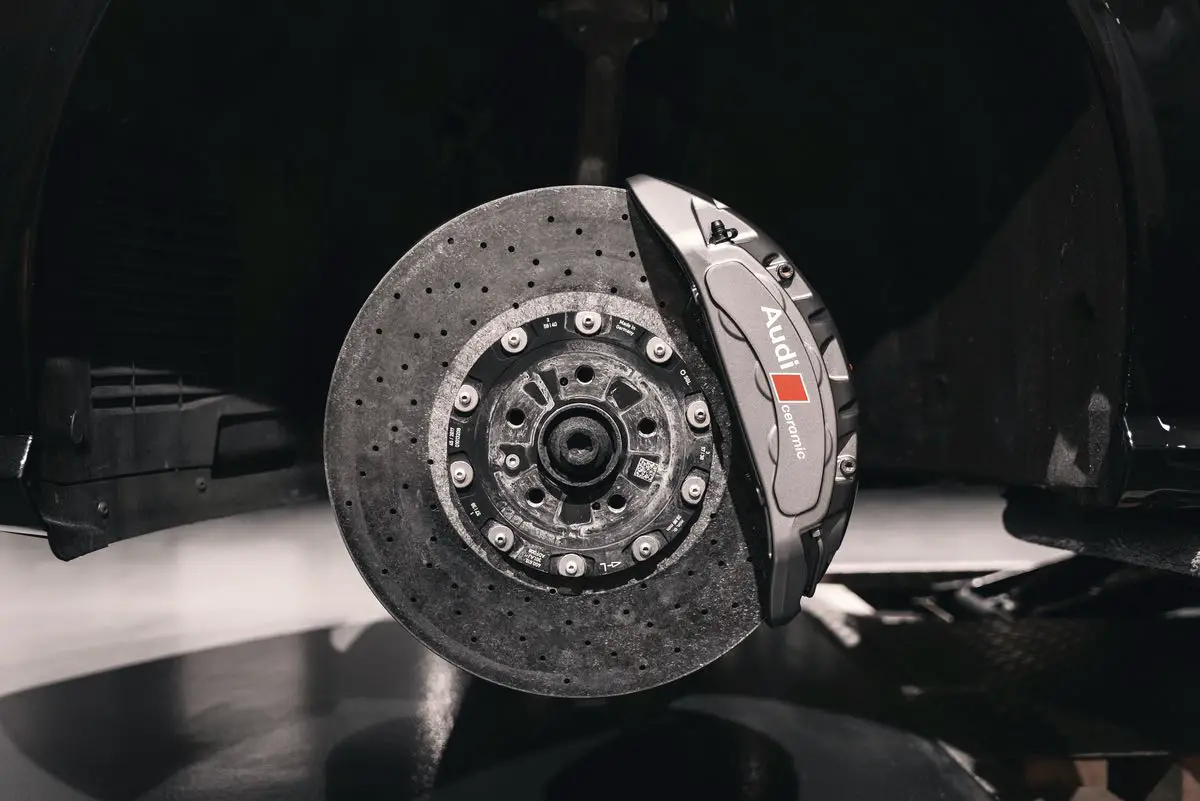Driving Stability: A Brief History of Traction Control
Explore the history of automobile traction control technology, from its early developments to its current state-of-the-art systems in modern vehicles.

The history of traction control is a fascinating journey that showcases the evolution of technology in the automotive industry. Traction control systems have played a crucial role in improving driving stability and safety over the years.
In this blog post, we will explore the history of traction control, from its inception to its integration with modern vehicle systems.
What Is Traction Control?
Traction control is an advanced automotive technology designed to prevent loss of grip between the vehicle's tires and the road surface, especially in slippery conditions.
At its core, traction control works by monitoring and controlling the amount of power that is transmitted to the wheels, ensuring that excessive wheel spin is avoided. When the system detects that a wheel is spinning faster than it should—indicating that it has lost traction—it intervenes by automatically reducing engine power or applying the brakes to that specific wheel. This adjustment helps maintain the vehicle's stability and prevents skidding, making it easier for the driver to control the vehicle in challenging driving conditions. Traction control systems use wheel speed sensors and other vehicle sensors to detect when a wheel is spinning faster than the others.
By doing so, traction control enhances safety, improves handling, and contributes to a more secure driving experience, particularly on wet, icy, or loose surfaces where the risk of losing control is higher. This system is particularly beneficial in maintaining traction during acceleration, where the potential for wheel spin is greatest, ensuring smoother, more controlled vehicle movement.
When Was Traction Control Invented?
The origins of traction control technology stretch back to the dawn of the 20th century when the automotive landscape was in its nascent stages. Initially, the focus was on mechanical solutions to improve the distribution of power to the wheels, leading to better handling on challenging surfaces. These early iterations of traction control, such as the limited-slip differential, aimed to enhance the driving experience by mitigating wheel slip in low-traction conditions. It was an innovative step forward but far from the sophisticated systems we recognize today.
The leap to electronic traction control systems occurred in the 1970s, marking a pivotal moment in the evolution of this technology. This era witnessed automotive engineers leveraging electronic solutions to address the limitations of purely mechanical systems. The shift was revolutionary, introducing a way to actively manage wheel slip through precise interventions. The initial electronic systems were basic by today's standards, but they laid the groundwork for the advanced traction control systems that would follow. These early electronic traction control systems used sensor data to detect when a wheel was losing grip and then adjusted engine power or applied braking to that wheel, thereby preventing or mitigating slip.
This period in the 1970s set the stage for rapid advancements in the field. It represented not just an expansion in the capabilities of traction control systems but also a broader shift towards integrating electronic technology into automotive safety features. This foundational era highlighted the potential for electronic systems to significantly enhance vehicle performance and safety, paving the way for the complex, computer-controlled traction control systems that would become standard in the decades to follow.
Early Attempts to Improve Vehicle Traction
The journey toward the development of traction control systems began with innovative mechanical methods aimed at enhancing vehicle traction, particularly on slippery or uneven surfaces.
Before the era of electronic traction control, automotive engineers and designers experimented with various mechanical solutions to improve the power distribution among the wheels. One such innovation was the creation of the limited-slip differential, which was designed to reduce wheel spin under low traction conditions by distributing the engine's power more evenly between the wheels that had the most grip.
These initial attempts were foundational, addressing the problem of wheel slip by mechanically limiting the differential action to ensure that if one wheel lost traction, the other wheel could still propel the vehicle forward. This method, however, was not without its limitations. Mechanical systems could only react to slip after it had occurred, without the ability to anticipate or efficiently manage traction in real-time.
The exploration into mechanical traction enhancement methods marked the automotive industry's first steps toward solving the complex problem of wheel slip and loss of control. These efforts demonstrated a clear understanding of the challenges faced by drivers on diverse terrains and under varying weather conditions. They also highlighted the need for a more adaptive and responsive system that could preemptively manage traction without the driver's manual intervention.
Although these early mechanical solutions provided a base for traction improvement, they paved the way for the eventual transition to electronic systems. This shift towards electronics in the automotive industry was driven by the desire for greater precision, adaptability, and integration with other vehicle systems, setting the stage for the advanced traction control technologies that would emerge in the following decades.
The Advent of Electronic Traction Control Systems
The transition to electronic traction control systems marked a significant milestone in the automotive industry, propelling the capabilities of vehicles to new heights during the late 20th century. As the 1990s approached, these systems underwent a rapid evolution, becoming increasingly sophisticated and a staple in vehicle safety features. Electronic traction control was a leap forward from mechanical solutions, employing advanced technology to manage and distribute engine power effectively and prevent wheel slip in real time.
This era of innovation saw the introduction of systems that could instantaneously react to driving conditions, making split-second decisions to adjust the power output to individual wheels. Unlike their mechanical predecessors, electronic traction control systems utilized an array of sensors to monitor wheel speed, vehicle acceleration, and other critical parameters. These sensors fed data to an onboard computer, which then executed precise interventions to maintain optimal traction across varying surfaces and driving scenarios.
The development and integration of microprocessors and enhanced computing capabilities within vehicles played a crucial role in the sophistication of traction control. These technological advancements allowed for more complex algorithms that could accurately detect the onset of wheel slip and act swiftly to counteract it. As a result, drivers experienced a marked improvement in handling and stability, especially in adverse weather conditions or on slippery roads.
During this transformative period, traction control systems began to integrate with other emerging technologies, such as anti-lock braking systems (ABS), further amplifying their effectiveness. This synergy between traction control and ABS exemplified the potential of electronic systems to work in concert, offering a layered approach to vehicle safety and stability that was previously unattainable.
The advent of electronic traction control systems underscored a pivotal shift towards embracing digital solutions to enhance automotive safety and performance. This period not only redefined expectations for vehicle capabilities but also set the stage for ongoing innovations in the realm of automotive technology.
Integration with Anti-Lock Braking Systems (ABS)
The fusion of traction control systems with anti-lock braking systems (ABS) marked a pivotal evolution in vehicle safety technology. This integration heralded a new era where drivers could enjoy heightened control and stability, not just when accelerating, but also during critical braking moments. The synergy between these two systems represents a leap in automotive engineering, offering a dual-layered approach to managing wheel slip and maintaining vehicle stability under various driving conditions.
ABS, by design, prevents the wheels from locking up during braking, thereby ensuring that the vehicle maintains steerability. When traction control systems joined forces with ABS, it added a new dimension to this capability. Now, the systems could also regulate the power sent to the wheels to prevent slip during acceleration, especially on slick surfaces. This combined functionality meant that vehicles could now better manage traction both when gaining speed and reducing it, offering a smoother and safer driving experience.
The mechanics behind this integration are sophisticated yet seamless in operation. Traction control and ABS share critical sensor data, such as wheel speed, which allows for real-time adjustments to both acceleration and braking forces. For instance, if a vehicle begins to slip during acceleration on an icy road, the traction control can reduce engine power while the ABS system can modulate the braking force to individual wheels, ensuring that traction is regained without the driver losing control. Today, ABS is a standard feature in most modern vehicles.
This innovative collaboration between traction control and ABS has set a standard in the automotive industry, making these systems almost inseparable from their mission to enhance vehicular safety and performance. As technology continues to advance, the interplay between these systems becomes more refined, further bolstering the safety net they provide for drivers around the globe.
Advances in Sensor Technology and Computing Power
The progression of sensor technology and computing power has significantly propelled the efficiency and responsiveness of traction control systems into a new era. As these systems have evolved, so too have the sensors that monitor vehicle dynamics and the environment.
Modern vehicles are equipped with an array of sophisticated sensors, including gyroscopes, accelerometers, and wheel speed sensors, which continuously gather data on the vehicle's motion and the road surface. This real-time data collection enables a highly accurate assessment of when and where traction is being lost, allowing for immediate corrective action.
Simultaneously, the computing power onboard vehicles has seen remarkable advancements. Today's automotive computers, or Electronic Control Units (ECUs), boast processing speeds and capabilities that were once unimaginable, enabling them to quickly analyze the vast amounts of data collected by the vehicle’s sensors. This rapid data processing is crucial for traction control systems, which must make split-second decisions to adjust engine power or apply braking to specific wheels, ensuring optimal grip and stability.
The synergy between improved sensor technology and enhanced computing power has allowed for the development of traction control systems that are not only more precise but also capable of predicting potential slips before they occur. This predictive capability represents a significant leap forward, moving from reactive systems to proactive safety measures. As a result, modern traction control systems can maintain vehicle stability in a broader range of conditions, offering a level of protection and confidence to drivers that was once beyond reach. The continued advancement in these areas promises to further refine the effectiveness of traction control, making driving safer and more reliable in the years to come.
The Role of Traction Control in Modern Vehicles
In the landscape of contemporary automotive design, traction control stands as a pivotal component, seamlessly integrating with a vehicle's suite of safety features to enhance driver control and confidence across a myriad of driving conditions. This system, now a ubiquitous aspect of vehicle safety, operates in concert with technologies like electronic stability control (ESC), further magnifying its effectiveness in preventing loss of control.
As drivers navigate various environments—be it slick city streets after a downpour, a snowy mountain pass, or uneven off-road terrain—traction control is continuously at work. It monitors and adjusts the power delivered to each wheel, ensuring that the vehicle responds accurately to the driver’s input, and maintains optimal grip and stability. This not only minimizes the risks of skids or spin-outs but also contributes to a smoother, more predictable driving experience.
The evolution of traction control has benefited significantly from advances in sensor technology and computing power, enabling the system to not only react to current driving conditions but also anticipate potential challenges. This predictive aspect of traction control, powered by sophisticated algorithms and real-time data analysis, represents a leap toward autonomous driving technologies and reflects the automotive industry’s commitment to enhancing road safety.
In essence, the role of traction control in modern vehicles transcends merely preventing wheel slip; it is a critical element in the holistic approach to vehicle safety and stability. Its integration with other advanced systems signifies a future where vehicles not only protect occupants during adverse conditions but also actively work to prevent such scenarios from occurring, making every journey safer.
Summary
The journey of traction control from its mechanical roots to today's high-tech electronic systems highlights the strides made in enhancing vehicular stability and driver safety. This evolution has seen traction control transform from simple mechanical fixes to complex, computer-controlled operations that seamlessly integrate with a vehicle’s broader safety systems, such as ABS and ESC.
The key developments in sensor technology and computing power have been instrumental in advancing traction control capabilities, allowing for real-time data processing and immediate corrective actions. These improvements have not only made traction control more responsive but also predictive, laying the groundwork for the future of autonomous driving technologies.
The transition from reacting to driving conditions to anticipating them marks a significant leap forward in automotive safety. As vehicles continue to evolve, the integration of traction control with other safety features will likely further enhance the driving experience, making it safer and more reliable.





